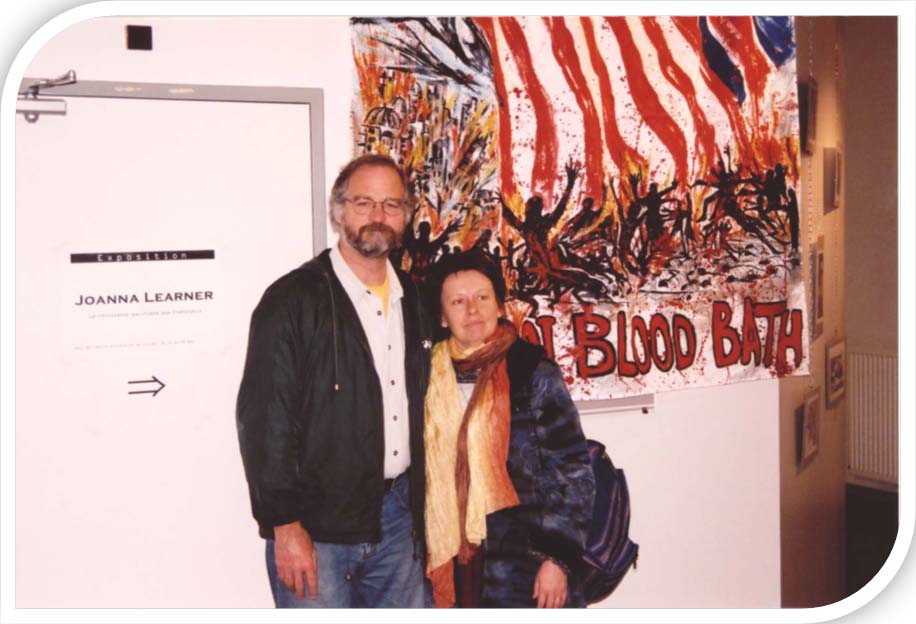
The Republic of the United States of America is in danger. By all reports, political traditions within the United States and the traditional relationships with U.S. allies are undergoing historic changes that began with terrorist attacks on targets inside U. S. national borders on September 11, 2001. Despite the magnitude of this violence and counter-violence, it can best be understood as messages or syntax, at the level of surface structure. At the level of deep structure, historic changes are occurring in the very codes and logic of the U. S. political economy, an economy which remained totally dependent on defense spending at the end of the Second World War. Today, in the post-cold-war world, with an unparalleled economic rivalry between the U.S. and the European Union and the Asian block, the military hegemony of the U.S. has been recognized by U.S. policy makers as the essential advantage to enhance American corporate growth. "If all you've got is a hammer," observed U.S. presidential hopeful General Wesley Clark in an interview with Amy Goodman on the U.S. news broadcast, Democracy Now!, (2 March 2007), "then every problem looks like a nail."
(Professor Francis Feeley with pianist Tatiana Baklanova-Feeley
standing in front of the painting, "Blood Bath", by American artist Joanna Learner)
The economic interests of the United States and the constraints which threaten economic expansion are at the level of deep structure, the logic which generates the syntax of the United States' War on Terrorism (including all its real consequences). The messages, the rhetoric and posturing, the civil rights violations, and even the mass murders can best be understood as surface structure phenomena, generated by deep structural needs of the U.S. economy, the rules of which neither major political party in the United States can afford to ignore. The danger, of course, is that values which traditionally have been promoted by the democratic Republic of the United States of America will be blamed for the occurrence of this violence, and the cry against "too much democracy" in America will be used in the attempt to install an authoritarian regime, curtailing the Constitutional rights of citizens and weakening institutional protections against tyranny in the name of "national security" and "economic growth".
What makes our contemporary period of U.S. history different from other periods of official paranoia and tyranny, such as the First Red Scare of 1919-1920, and the McCarthy Era of the early 1950s, is that the economic needs of corporate expansion are more global and competition for access to natural resources, cheap labor, consumer markets, and environmental "carrying capacities" for toxic waste involves planetary tactics against which only democratic strategies can be effective. But such strategies, if they are to succeed, require the recognition that the many levels of crises which we are now experiencing throughout the world are, in fact, due to the dictatorship of capital, in other words they are the result of too little democracy in the industrialized societies rather than too much democracy. Only by recognizing this deep structure, which has generated terrorism as a tactic, can a successful strategy against terrorism be developed. To borrow the famous phrase of "the former future president of the United States," Al Gore, it is indeed "Earth in the Balance". . . .
Our research associates at CEIMSA are making serious contributions to a scientific understanding of this political economy in transition. Their scientific work should be useful to those citizens of the world who advocate democratic constraints on further economic expansion and on the wars it necessitates.
___________
Newsletter n°1
Newsletter n°2
Newsletter n°3
Newsletter n°4
Newsletter n°5
Newsletter n°6
Newsletter n°7
Newsletter n°8
Newsletter n°9
Newsletter n°10
Newsletter n°11
Newsletter n°12
Newsletter n°13
Newsletter n°14
Newsletter n°15
Newsletter n°16
Newsletter n°17
Newsletter n°18
Newsletter n°19
Newsletter n°20
Newsletter n°21
Newsletter n°22
Newsletter n°23
Newsletter n°24
Newsletter n°25
Newsletter n°26
Newsletter n°27
Newsletter n°28
Newsletter n°29
Newsletter n°30
Newsletter n°31
Newsletter n°32
Newsletter n°33
Newsletter n°34
Newsletter n°35
Newsletter n°36
Newsletter n°37
Newsletter n°38
Newsletter n°39
Newsletter n°40
Newsletter n°41
Newsletter n°42
Newsletter n°43
Newsletter n°44
Newsletter n°45
Newsletter n°46
Newsletter n°47
Newsletter n°48
Newsletter n°49
Newsletter n°50
Newsletter n°51
Newsletter n°52
Newsletter n°53
Newsletter n°54
Newsletter n°55
Newsletter n°56